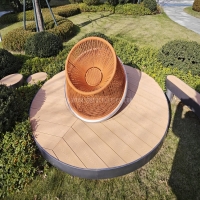Welcome to the website for landscape facilities products and knowledge.
How does the Landscape Round Table align with universal design principles for accessibility?
The Landscape Round Table represents a significant advancement in creating outdoor spaces that genuinely embrace universal design principles for comprehensive accessibility. This innovative approach moves beyond mere compliance with accessibility regulations to create environments that are inherently usable by people of all ages and abilities.
At its core, the Landscape Round Table framework aligns with the seven principles of universal design by incorporating equitable use, flexibility in use, and simple intuitive use into every aspect of landscape planning. The design methodology ensures that spaces are not only physically accessible but also perceptibly and cognitively navigable for diverse user groups.
One of the fundamental ways the Landscape Round Table achieves this alignment is through its integrated approach to circulation paths. Rather than treating accessibility as an afterthought, the framework mandates that primary routes through landscapes are designed from the ground up to accommodate wheelchair users, individuals with visual impairments, and those with mobility challenges. This includes carefully calibrated slope gradients, adequate resting areas, and tactile guidance systems that benefit all users.
The framework also emphasizes perceptual accessibility through multisensory design elements. By incorporating auditory cues, tactile surfaces, and visual contrasts, Landscape Round Table implementations create rich sensory experiences that remain accessible to people with varying sensory abilities. This approach recognizes that accessibility extends beyond physical mobility to include comprehensive sensory engagement with outdoor environments.
Furthermore, the Landscape Round Table promotes social integration by designing gathering spaces that eliminate physical and social barriers. Circular seating arrangements, adjustable height features, and inclusive activity zones encourage interaction among people with different abilities, fostering community connections and reducing the stigma often associated with segregated "accessible" features.
The environmental sustainability aspects of the Landscape Round Table also align with universal design principles. By creating durable, low-maintenance landscapes that remain accessible through seasonal changes and over time, the framework ensures long-term usability while minimizing future accessibility barriers that can develop through wear or inadequate maintenance.
Through its holistic consideration of how people interact with outdoor spaces across the entire spectrum of human ability, the Landscape Round Table demonstrates how universal design principles can be practically applied to create landscapes that are not just technically accessible, but truly welcoming and functional for everyone. This represents a paradigm shift from accessibility as a checklist requirement to accessibility as an integrated design philosophy that enhances the experience for all users regardless of their physical or cognitive capabilities.
Related search:

Recommendation
Swivel chair-Specialty steel structure woven rattan leisure chair with rotatable design